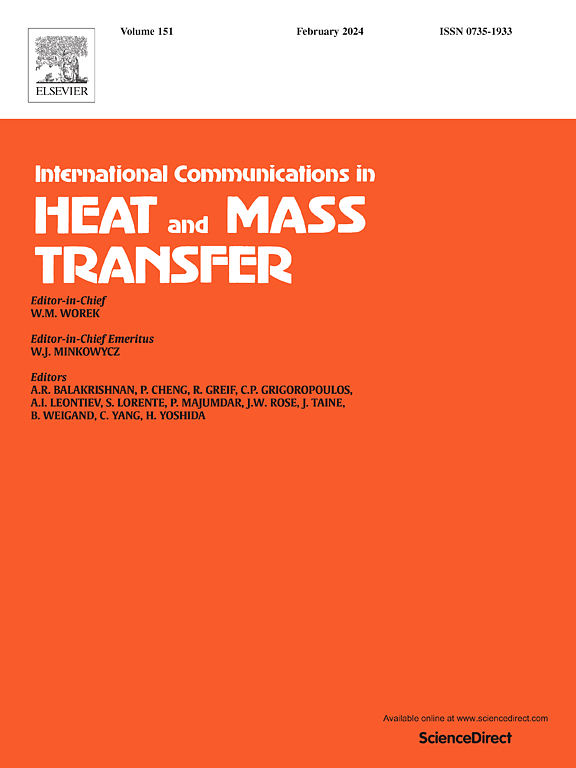A supercritical carbon dioxide cooling heat transfer machine learning prediction model based on direct numerical simulation
IF 6.4
2区 工程技术
Q1 MECHANICS
International Communications in Heat and Mass Transfer
Pub Date : 2025-02-20
DOI:10.1016/j.icheatmasstransfer.2025.108753
引用次数: 0
Abstract
The severe thermo-physical properties variations of supercritical fluids in the vicinity of the critical point lead to difficulty in heat transfer prediction. In this paper, a novel prediction model for supercritical CO2 (sCO2) cooling heat transfer is proposed, integrating a Direct Numerical Simulation (DNS) database with the CatBoost algorithm. A high-precision heat transfer prediction database was established based on DNS data (8192 data points in total). The feature parameters were screened utilizing the random forest feature importance method. More importantly, a newly dimensionless parameter, , was selected as one of the feature parameters. represents the impact of near-wall acceleration caused by buoyancy, and it demonstrated the highest feature importance during training and screening processes. Based on the selected ten characteristic parameters, a robust data-driven heat transfer prediction model for sCO2 was developed. The CatBoost algorithm outperformed the other three widely used machine learning algorithm s across training sets, testing sets, and actual predictions, achieving a mean absolute percentage error reduction of up to 22.69 %. Through comparison with 6 traditional heat transfer correlations, the results showed that the CatBoost-based sCO2 cooling heat transfer prediction model exhibits superior training speed and predictive accuracy, with a maximum relative error of merely 6.57 %. Moreover, when validated through experimental data with large Reynolds number, this model still has the highest accuracy, with 91.3 % of the data sets having a prediction accuracy within ±30 % for the Nusselt number.
求助全文
约1分钟内获得全文
求助全文
来源期刊
CiteScore
11.00
自引率
10.00%
发文量
648
审稿时长
32 days
期刊介绍:
International Communications in Heat and Mass Transfer serves as a world forum for the rapid dissemination of new ideas, new measurement techniques, preliminary findings of ongoing investigations, discussions, and criticisms in the field of heat and mass transfer. Two types of manuscript will be considered for publication: communications (short reports of new work or discussions of work which has already been published) and summaries (abstracts of reports, theses or manuscripts which are too long for publication in full). Together with its companion publication, International Journal of Heat and Mass Transfer, with which it shares the same Board of Editors, this journal is read by research workers and engineers throughout the world.

 求助内容:
求助内容: 应助结果提醒方式:
应助结果提醒方式:


